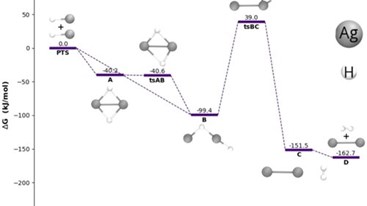A new form of concrete, stronger and with a lower carbon footprint, has been created by researchers utilizing some of the waste products of biofuel production. Concrete is an extremely widely-used material, and because of this has a rather significant carbon footprint, accounting for between 3-8% of global carbon dioxide emissions. The development of a concrete with a much lower carbon footprint could be significant.
“The idea is to use bioethanol production byproducts to produce a material to use in concrete as a partial replacement of cement,” said FeraidonAtaie, doctoral student in civil engineering. “By using these materials we can reduce the carbon footprint of concrete materials.”
Concrete is a mixture of three main components: portland cement, water, and aggregate. In order to cut back on the carbon footprint of concrete, the researchers from Kansas State University have been looking for environmentally friendly materials to replace the portland cement.
“It is predicted that bioethanol production will increase in the future because of sustainability,” Ataie said. “As bioethanol production increases, the amount of the byproduct produced also increases. This byproduct can be used in concrete.”
Specifically, the researchers have been looking at the byproducts that result from the production of cellulosic ethanol (biofuel made from inedible materials such as wood chips and grain husks). The focus is on these byproducts because of their perceived lack of value — the byproducts of other forms of biofuel production, such as corn ethanol production, are generally sold as cattle feed.
“With the cellulosic ethanol process, you have leftover material that has lignin and some cellulose in it, but it’s not really a feed material anymore,” Kyle Riding, assistant professor of civil engineering and Ataie’s faculty mentor, said. “Your choices of how to use it are a lot lower. The most common choices would be to either burn it for electricity or dispose of the ash.”
But when the material is added to cement, it reacts chemically to make the concrete noticeably stronger. “The researchers tested the finished concrete material and found that replacing 20 percent of the cement with cellulosic material after burning increased the strength of the concrete by 32%.”
Interesting, and potentially very-useful, but biofuels have some significant problems. It remains to be seen how much they will be a part of the world’s energy supply in the future.
Source: cleantechnica.com









 EOI Extension (#3): C2.2.2: Review and update for current EE benchmarking for 2 sub-industrial sectors
EOI Extension (#3): C2.2.2: Review and update for current EE benchmarking for 2 sub-industrial sectors
 National Conference on Energy Efficiency and Conservation 2024
National Conference on Energy Efficiency and Conservation 2024
.jpg?w=367&h=206&mode=crop) Technical Consultation on Energy Usage Standards Amendment in the Steel Industry
Technical Consultation on Energy Usage Standards Amendment in the Steel Industry
.jpg?w=367&h=206&mode=crop) Paper Industry's Efforts to Save Energy
Paper Industry's Efforts to Save Energy
 Enhancing Awareness of Energy Management Systems and System Optimization
Enhancing Awareness of Energy Management Systems and System Optimization
 Efficient and Economical Energy Use in Wood Production
Efficient and Economical Energy Use in Wood Production
 Launching "Accelerating Innovative Startups for Energy Efficiency Competition"
Launching "Accelerating Innovative Startups for Energy Efficiency Competition"